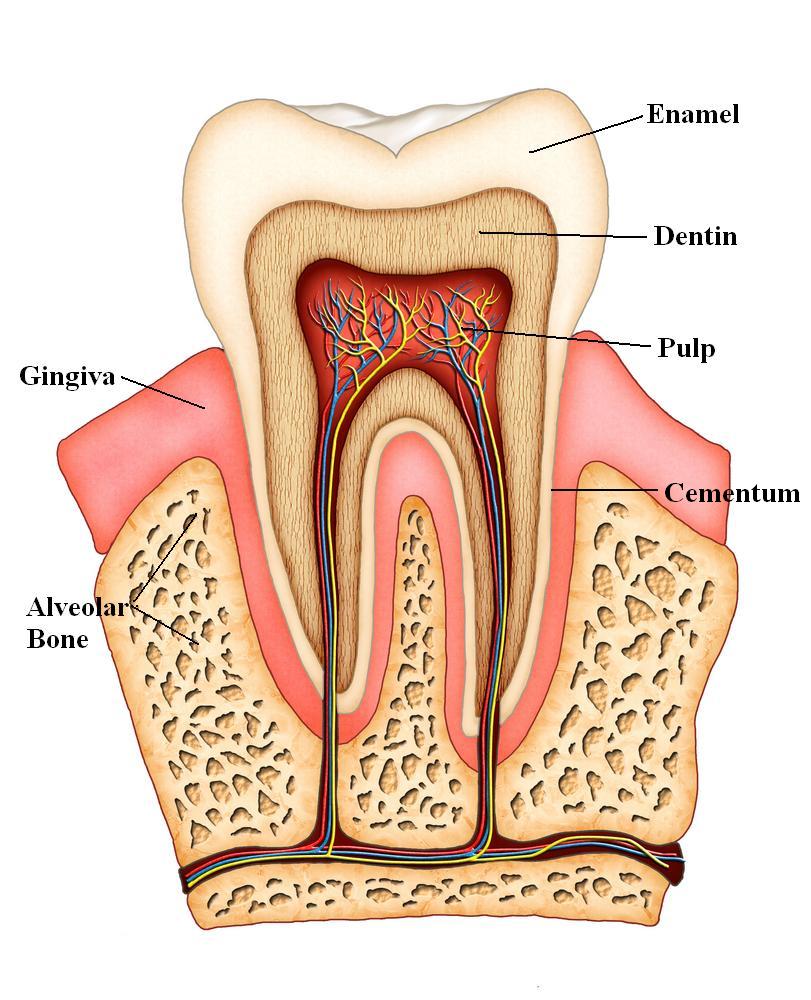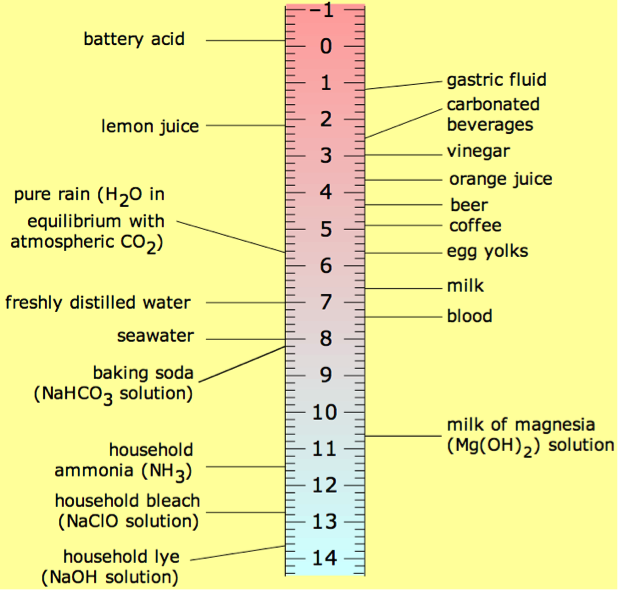Anatomy of a tooth/Childs diet
The Anatomy of a Tooth
To discuss the effects of fluoride we first need to understand a little bit about what makes a tooth. A tooth has three layers: the enamel, the dentin, and the pulp: which contains the nerve. The enamel and dentin are solid layers made of minerals and play crucial roles in protecting the pulp.

The Mineral Balance of a Tooth
A tooth needs to maintain a good mineral balance to stay healthy. Its surroundings, or the oral environment, strongly affect this balance. You might remember from high school chemistry that pH is a measure of acidity on a scale of 0 to 14.0. Water has a neutral pH of 7.0, while substances lower than 7.0 are acidic, and a solution with a pH greater than 7.0 is a base.
All of the food and drinks in a person’s diet influence the mouth to have a higher or lower pH. However, most children’s diets tend to make the oral environment more acidic. An acidic oral environment can cause teeth to demineralize, in which the enamel and dentin weaken and dissolve away. As the outermost layer, the enamel is the most important in protecting the tooth. While it is the hardest substance in the human body, the enamel can start to dissolve at a pH of 5.2. The next layer is the dentin, which will dissolve at the pH of 6.9.
In an ideal oral environment, saliva plays a crucial role in protecting the teeth. Saliva remineralizes or restores the mineral balance, of teeth that can be lost during normal wear and tear. If remineralization cannot occur after the enamel and dentin dissolve, cavities will develop.

What’s in your Child’s Diet?
The average child’s oral environment tends to be very acidic because of frequent consumption of highly acidic food and drinks. For example, most fruits and juices have a pH near 4.0 or 5.0. Worse, most sports and soft drinks have a pH around 3.0. Keeping in mind that water has a neutral pH of 7.0, it follows that frequent consumption of many beverages will cause a lower pH in a child’s mouth. This is where fluoride supplements become a crucial tool in the fight against childhood cavities. Fluoride helps the remineralization process via two different delivery mechanisms: systemic and topical.
Trustindex verifies that the original source of the review is Google. Highly recommend! We've been going here for years now & I never have a complaint!Posted onTrustindex verifies that the original source of the review is Google. If you’re looking for a place that works well with kids I definitely recommend them, the staff is very welcoming and know how to make the visit fun and non scary for the kiddos! My kid leaves this place wanting to go back everytimePosted onTrustindex verifies that the original source of the review is Google. Dr Ngo and team are absolutely great with kids. They go beyond the usual cleaning and talk about jaw, bite, speech and oral health overall. We are grateful to have them local and our kids love going in!Posted onTrustindex verifies that the original source of the review is Google. Me encanta como tratan amos niñosPosted onTrustindex verifies that the original source of the review is Google. Great! took care and kept my daughter calm fast and detailed.Posted onTrustindex verifies that the original source of the review is Google. My son, had a great experience. They were great with my son who is four years old and he felt very comfortable. Great place to take your kids!Posted onTrustindex verifies that the original source of the review is Google. We have been coming to Kid Focus for years and absolutely love it!!!Posted on

